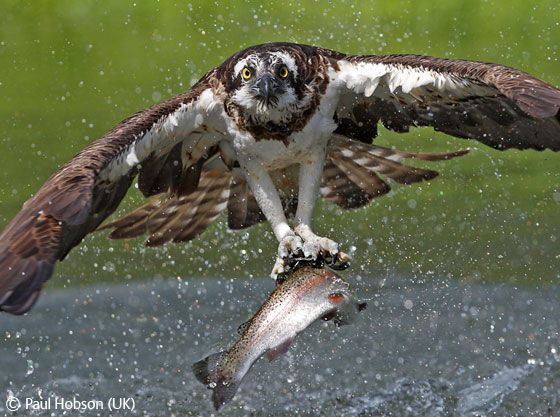The annual Wildlife Photographer of the Year Competition finds the very best wildlife images taken by the world’s top professional and amateur photographers.
Here are some of the winners from the Wildlife Photographer of the Year 2008 competition.
Overall Winner – Snowstorm Leopard

This most striking photo was taken by Steve Winter (United States of America) after spending 10 months and a winter with little snow in Ladakh’s Hemis High Altitude National Park, India.
Snow leopards are adapted to life in the mountains of central Asia. They have long, waterproof outer fur, dense woolly under-fur and large nasal cavities that warm the air as they breathe it in. This allows them to survive temperatures as low as -40°C. But the leopards can also tolerate the heat of the Gobi Desert, where temperatures can reach 40°C.
Creative Visions of Nature Winner – Polar Sunrise

This photo taken by Miguel Lasa (United Kingdom) shows a bear backlit by the first rays of sunlight.
During winter, polar bears live on the frozen seas of the Arctic. In summer, in areas where the ice melts completely like Canada’s Hudson Bay, they spend months ashore living on a variety of foods. They will also swim in the water and catch birds. By the time the seas freeze again in autumn they are eager for fresh seal-meat.
Animal Behaviour: Birds – Osprey Snatch

This specially commended photo by Paul Hobson (United Kingdom) was taken from hide overlooking a lake in Pohtiolampi, Finland.
Ospreys hover over water then dive, plunging into the shallows to grab prey. They have special feet to hold onto slippery fish scales: the soles are covered in spines and one talon can move so the bird can grip either side of the fish.
Ten years and under – Great Tits and Teasels

This photo from Baptiste Drouet (France) won the runner-up prize in the 10 years and under section of the Junior awards.
Great tits are a woodland bird found across Europe and Asia, but many have adapted to urban gardens. In rural areas they eat insects, but urban populations supplement their diet with bird seed put out by humans. Tits can be aggressive at bird tables, fighting off other smaller birds.
One Earth Award Winner – Sacrifice

Taken by David Maitland (United Kingdom), this disturbing photo shows a Gabon black colobus monkey being tossed onto an open fire to strip off the fur.
A cloud of acrid smoke filled the air. Then, the glossy jet-black fur caught fire, crinkled and crisped up, and fell off as dust. It was deeply upsetting.’ Black colobus monkeys have a distinct, high-pitched roar and frequently call to each other, so human hunters can easily track them down. This helps to make them one of the 10 most threatened primate species in Africa.
You can see more photos from the competition at the Natural History Museum’s Online Gallery.
If you live in Cape Town, the Wildlife Photographer of the Year 2008 exhibition will be at the Iziko South African Museum (25 Queen Victoria Street Cape Town) until 15 March 2009. Entrance is R15 and well worth it.

